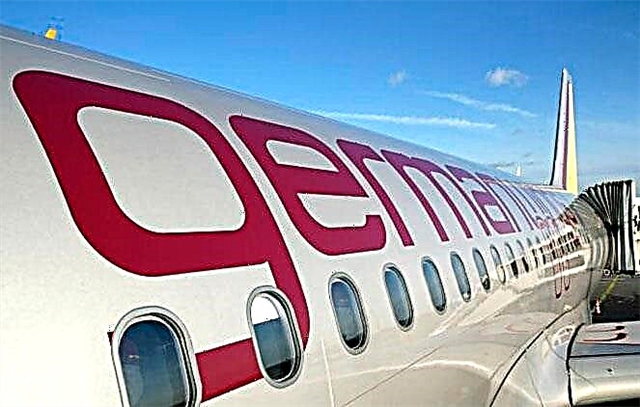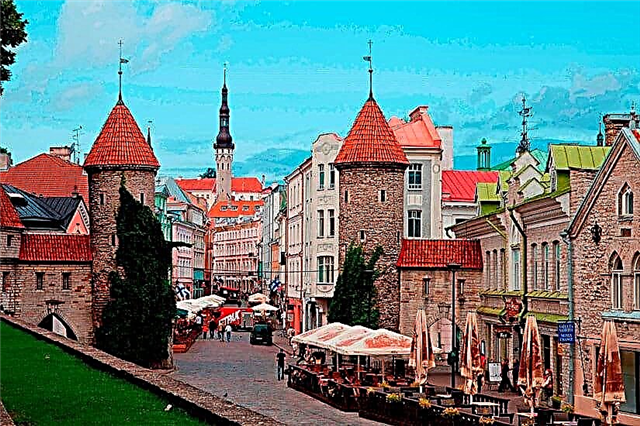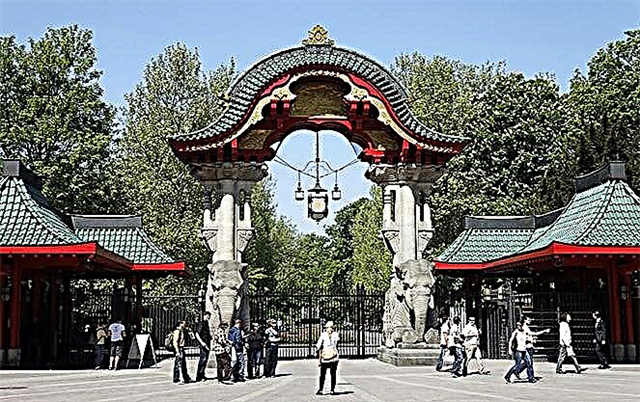Among the many memorable places and attractions of the German capital, the Berlin Zoo occupies a special place. No other zoo in the world has such a species diversity of animals, birds and fish. In addition, the animal garden ranks first in the world in terms of the number of inhabitants - there are about 20 thousand of them. A well-groomed area of several tens of hectares, spacious open-air cages, an extensive oceanarium, habitat conditions for animals close to natural - all this attracts numerous visitors every day.

A bit of history
The first zoo in Germany was founded in the middle of the 19th century, when King Wilhelm III opened his own menagerie with rare animals in the suburbs of Berlin. His son, Wilhelm IV, moved the zoo to the center of the capital and ordered the development of a huge area.
Director Heinrich Bodinus in 1869 set a course for the exoticism of the park: the Houses of antelopes, giraffes, and the grandiose Elephant Gate that he built looked like oriental palaces and pagodas. They are left in their original form and look the same as they did 150 years ago, giving the zoo a special look.
During World War II, the zoo was razed to the ground, some of the animals fled, some were killed. Miraculously survived two lions, an elephant, a hippopotamus, which later became the ancestor of the post-war hippos in Germany.
The zoo was originally located on the territory of the former West Berlin, and after the unification of the country, the capital had a second - the Friedrichsfelde Zoo, which is located in the eastern part of the city.
Berlin is proud of its oldest zoo, where monuments are erected to the hippopotamus who survived the war, the white bear Knut, who was a favorite of children and adults. Today this amazing corner of wildlife has become a favorite walking place for Berliners and city visitors.

What animals are in the zoo
A variety of animals, birds, fish live in the zoo of the German capital. Many of them in nature are endangered rare species. For example, the red panda is rarely found even at home - in Tibet and Nepal, and twins - Kit and Kitty - live in Berlin at once. They replaced the world's oldest bamboo bear, Bao Bao, which died in 2021.

The transparent wall of the reservoir for hippos and fur seals allows you to see them underwater. In closed rooms, warm greenhouses are arranged, where tropical birds, for example, kiwi, live.
Aviaries with low air temperatures have been built for penguins.
Bats, anteaters, armadillos live in the semi-dark basements, for which the ideal living conditions have been recreated. Snow leopards, polar bears, giraffes, elephants, and rare breeds of monkeys feel great in spacious open-air cages.

Visitors can take part in the feeding of the animals, which is organized according to the schedule:
- wolves - 10.30 am (except Wednesday);
- seals - 11.00;
- gorillas - 11.30;
- orangutans and chimpanzees - 13.30;
- seals - 13.30;
- penguins - 14.00;
- predators - 2.30 p.m. (in winter - 3.30 p.m.);
- hippos - 14.30;
- sea lions - 15.15 (with show).
Oceanarium

The zoo's aquarium has existed since 1913. He either actively grew and developed, then fell into decay. Now this water kingdom is located in the old and new buildings. Here are collected sea and freshwater fish, reptiles, amphibians, rare insects.
The Berlin Aquarium offers a look at sharks and a Komodo dragon, and there is also the rarest fish Arowana - a gift from the King of Thailand.
At the entrance to the old building, guests are greeted by a life-size iguanodon statue, depicting dinosaurs. The new building houses five aquaterrariums, which impress visitors with their size.
Opening hours and cost
Depending on the season, the zoo's opening hours slightly change, although it is open daily both in winter and summer. In order to have only good impressions after your visit, you should know the schedule and prices in advance.
Opening hours of the Zoo in Berlin:
- winter (October 25-March 20) - from 9.00 to 17.00, ticket office - from 9.00 to 16.30;
- spring-summer (March 21-September 14) - from 9.00 to 19.00, ticket office - from 9.00 to 18.00;
- autumn (September 15-October 24) - from 9.00 to 18.00, ticket office - from 9.00 to 17.30.
The ticket price depends on what you will see: only the zoo or if you plan to visit the aquarium in a separate building. Ticket prices:
- adults - 15.5 euros, with the oceanarium - 21 euros;
- children 4-15 years old - 8 euros, with an aquarium - 10.5 euros.
There are also preferential family, pension, student rates: 10.5 euros and 15.5 - with the oceanarium.
Zoo address: Hardenbergplatz, 8. Official site.
How to get there
Metro: lines U-2, U-9, U-12, Zoologischer Garten station; lines U-1, U-9, Kurfürstendamm station.
City train S-bahn: lines S5, S7, S75, S9, station Zoologischer Garten.
The location of the zoo is shown on the Berlin map below.

What else to visit in Berlin
Germany is considered a model of order and European way of life, and a rich history has provided an abundance of attractions in the country and Berlin in particular. Those who come to the German capital for the first time strive to see the most famous sights: the famous Reichstag, where parliament sits today, and a glazed observation deck is located at the top, and the Brandenburg Gate, which has become the symbol of a united Germany.
From the Brandenburg Gate goes the famous Unter den Linden - Boulevard "Under the Lindens".
Here begins the Tiergarten park with playgrounds, benches in the shade of trees, meadows where hares jump, paths for riding scooters, rollerblades, and bicycles.
Entertainment facilities are popular, including the water park, where you can spend time swimming in the pools and riding the slides.
Conclusion
Arriving in Berlin, tourists will not be able to get bored, because there is everything for a rich and interesting pastime: performances, concerts, entertainment, sightseeing. In this whirlwind, try not to forget about visiting the Berlin Zoo, which will leave the most pleasant impressions for both adults and young tourists.











